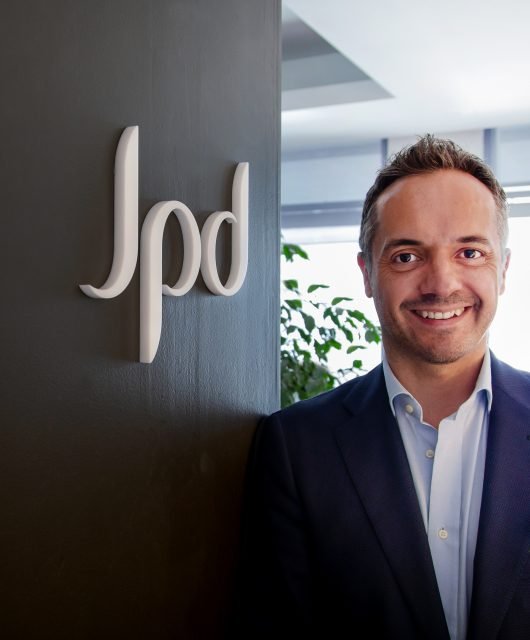By: Natasha Hatherall-Shawe, Founder and CEO of TishTash

Traditionally, we have seen employees discouraged from utilising personal social media profiles to engage in subjects seen contradictory to company values, opinions, politics, religion or are considered morally dubious. The boom of use in various platforms left companies and brands nervous of looking bad in both the eyes of the public or in front of clients, current or potential.
Solid PR practitioners know that there is ‘nowhere to hide’ anymore and educate their clients on the same. If it didn’t feel difficult enough to control, globally, we are now seeing an exploding trend of full tabloid articles and crisis created out of historical comments, tweets, along with the more extreme cancel culture – it really doesn’t take ‘much’ anymore.
Whilst media and cyber laws in the UAE and beyond actually provide us with a level of brand protection, It’s understandable to want to control image and perception regardless– it’s what we do as communications professionals. Damage limitation, surely, can be made easier by knowing your employees are simply not allowed to utilise social media in this way, and having policies that say such.
But we are in the PR industry, and increasingly I can see an advantage to having the opposite policy for employee social media profiles when it comes to managing a crisis.
Employee advocacy can be used to negate negative stories as much as the opposite can be true – by utilising their own social media presence to advocate for their employers or brands. Regionally, we are far less likely to need this in a crisis situation, due to the aforementioned media laws – but we can consider this wider if we look at it from a ‘customer service’ point of view.
To harness this, you will of course need the ubiquitous plan. No one likes a contingency plan or even to think a crisis may loom. But loom they do, and it is the unprepared who comes out the worst. Pre-agreed crisis communication planning is vital. Again, to dilute this more realistically, this is more likely to occur for us by way of disgruntled customers or service users sharing their experiences online.
Whilst as practitioners we like to think in terms of tier one media for example, or peer led industry platforms, the reality is that there is nothing more influential in 2022 at a grassroots level than online forums and platforms where consumers and the general public are able to discuss and share.
If we understand where our employees are hanging out online and have an agreed policy as to what a ‘crisis’ response would be in different scenarios. Of course, in some instances it may be important to have a blanket ban, before damage limitation responses go live, should they be required. Policies are vital as much as enthusiastic employees can be useful for brand goodwill and awareness, it can also result in them feeling obliged to comment, defend or ‘back up’ when it may not be appropriate or necessary – even if the positive goodwill is there.
If employees are bound to share company responses or comment on behalf of, make sure that key messages are clearly dispersed. Nobody wants a back track. Transparency and authenticity is key in 2021, but mixed messages reflect badly. An executive team at least would be on the same page.
Again, it’s important to be realistic. Sharing news and updates is going to useful. If it’s an employee’s own actions or behaviours that are in question, this social media advocacy is not a strategy to leverage. In this circumstance however, senior management and leaders should be prepared to utilise their own platforms in response. We cannot expect the power of digital to work in our favour professionally, and then run and hide when it doesn’t.
A clear and detailed blueprint is required for your employees. Typically, scenario testing works in this instance and a list of approved responses and messaging. Don’t forget, this advocacy can include the personal too. Friends and family members will also start asking questions – especially if it’s a public, or community interest story. We cannot put the onus on employees personally to take the brunt, but it helps for them to have the right guide to follow, and to know where to ‘send’ people for further information and responses.
We must also respect employee’s privacy. Leveraging our employee’s social media profiles for company gain, publicity or awareness is one thing, but they are not obliged to. The indomitable Carrie Rose of Digital PR agency Rise at 7 specifically hires people with strong online ‘personal brands’ – it’s literally their job to leverage these. However, in a more traditional sphere, unless it is written into contract policy and is a non-negotiable, these profiles and platforms remain the property of the individual.
If this is not something you’ve considered yet amongst your crisis communications planning, it is a must to consider. In our industry it’s unlikely you will have a social media shy team, and with planning and thought, it’s entirely possible to work together to leverage the benefits during crisis management, alongside all the positive. At TishTash, we have a typically social savvy team who enjoy sharing client products, wins, initiatives and are general cheerleaders across all platforms. We must always keep the shadow of negativity in mind however – it’s short sighted not to.





